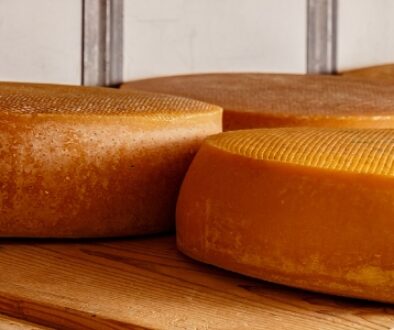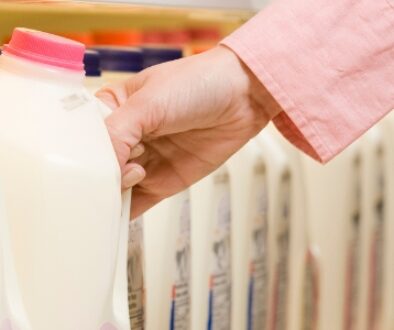A Processor Perspective on Price Reforms
Gyrating milk and cheese prices in this the most unusual marketing year in generations has spurred calls for federal order reform with a focus on negative PPDs. The discussion deserves a processor perspective.
In August, Hoard’s Dairyman opined “As cheese soared to record prices, frustration boiled over in the countryside. That’s because negative producer price differentials (PPDs) torpedoed June milk checks with deductions over $7 per cwt. in four Federal Milk Marketing Orders.”
The frustration was real but misplaced. A negative PPD does not mean farms received less than they “should have,” but rather reflects a fast-rising cheese price pushing the value of Class 3 milk past the earlier announced value for Class 1 fluid milk. “All that means,” economists Mark Stephenson and Andrew Novakovic wrote in a June 26 Information Letter, “is that we paid out more money to producers in Class III component values than we collected from plants across all classes of milk. For farmers, it is really just a curiosity in the accounting method.”
Negative PPDs are linked to the decision cheese manufacturers must make to participate in an order pool or remove some or all of their patron milk from the pool (depool). On the heels of a devasting spring for cheese prices and profitability, cheesemakers depooled heavily in the Upper Midwest Order this summer: pooled pounds of Class 3 milk diminished from 2.3 billion pounds in May to 542 million pounds in June.
In Wisconsin, depooling meant the rising value of cheese could be paid directly to producers, rather than the federal order pool, and be used to shore up bottom lines after two unprofitable months on the cheese side. In May, for example, the all-milk price paid to farms ($13.60/cwt) exceeded the monthly value of cheddar cheese ($1.29/lb) used in the Class 3 price. By June, the all-milk price in Wisconsin reached $19.50/cwt.; then $22.30/cwt. in July and $19.40/cwt. in August.
Wild price volatility exposes the weaknesses in a regulated pricing system. In each month’s federal order milk pool, the value of Class 1 fluid milk is set in advance – six weeks before the value of Class 3 and Class 4 milk. Skyrocketing cheese or butter prices in that gap can flip PPDs – the added value of Class 1 milk – to negative and the subsequent decision by cheesemakers to pay their farms outside of the pool can reduce the overall value of the pool.
Stephenson and Novakovic, in their June 26 Information Letter, state: “Because the higher valued Class III milk is withdrawn from the pool, it pulls down the total and average value of the pool. The (new) blend price is lower than it would have been had Class III milk stayed.” Reform should address the problem – the unaligned pricing dates for milk classes– rather than the industry’s reaction to the problem.
American Farm Bureau stepped into the federal milk marketing order reform discussion this summer. A working group spent over a year studying orders and milk pricing and released a final report in July 2020. The report has several positive ideas, but two policy priorities from this deep dive into the workings of federal orders merit feedback from a processor perspective.
- Farm Bureau looked at make allowances in milk classes and while they did not draw a definite conclusion, they made some curious observations. A supporting paper, Background on Milk Price Formula Make Allowances computes the value of make allowances – such as the 20 cents/lb make allowance for cheddar in Class 3 equaling $3.17 per hundredweight – and concludes “the make allowances effectively reduce the regulated value of milk in all classes.”
The entire value of dairy products cannot be handed over to the milk supplier or the manufacturer would have no money to pay employees, or the electric bill, or fixed expenses. The backgrounder grinds on this point: “Make allowances were the highest in Class III at $16 billion since 2010…. Total make allowances since 2010 have represented $33 billion.” Despite this tabulation of all the money “lost” to make allowances, any reform that retains this system would have to look at raising these 12-year-old allowances to reflect the rising costs of steel, concrete, packaging, transportation, and labor.
2. Farm Bureau concludes the industry should “Enhance price discovery by expanding mandatory price reporting to include the wholesale sales prices of more finished dairy products.” The final report proposes a pilot program “to expand mandatory price reporting for select dairy products such as mozzarella cheese, dry whole milk, whey protein concentrates and products sold under the terms of a forward contract and delivered that week.”
While it’s tempting to look at higher value dairy products (rather mild cheddar, butter, nonfat dry milk, and dry whey) when discovering prices for federal order price formulas, these formulas are, by design, calculating a base price for milk used in various ways. Lifting government-set base prices by discovering more cents in value-added dairy products moves the industry away from the ability to offer free-market, competitive prices – away from free-market milk price premiums – and erodes processors’ ability to invest in new technology, products, and marketing.
The commodities used in federal order price formulas have already abused the concept of base prices. When USDA added the dry whey price to the Class 3 milk price formula, most cheesemakers in the U.S. found themselves paying dairy farmers for a product they don’t even make. The correct base commodity should have been skimmed, raw whey.
A year of volatile markets has rekindled talk of milk price reform. Certainly, reform is overdue, but all perspectives must be heard before milk pricing and handling is reimagined for a changing world.
Keep Up to Date
Find all of HART Design & Manufacturing current industry news here.




